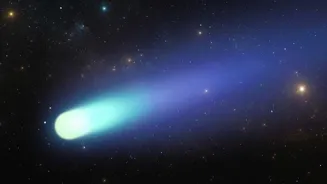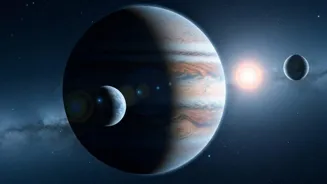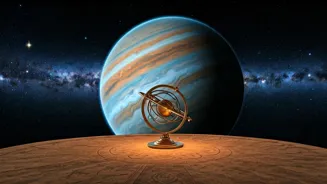An exciting new update has emerged from NASA headquarters in Washington, D.C, about a mysterious interstellar object – 3I/ATLAS, which is speeding through our solar system at extraordinary velocities.
Detected on July 1, the 3I/ATLAS has fascinated scientists in the USA and the rest of the world for running through the solar system at an astonishing speed of 1,30,000 miles per hour.
NASA Detects Fastest Ever Interstellar Object
According to NASA’s Hubble Space Telescope observations, the 3I/ATLAS is the fastest interstellar object ever detected, with its remarkable speed of 130,000 miles per hour. Capable of travelling 209,000 km/hour, 3I/ATLAS surpasses previous interstellar visitors such as Oumuamua and Borisov in speed.
Scientists are attributing billions of years of gravitational interactions, known as the “gravitational slingshot effect”, to the object’s velocity, with passing stars, planets and nebulae imparting additional momentum to the comet. Given its rapid flow, the object is only briefly visible to the scientists, who have had to undertake their studies on the fleeting window of opportunity. NASA is hoping to capture as much information as possible about the 3I/ATLAS.
Other Details About The 3I/ATLAS
NASA’s Hubble Space Telescope observations have also found other details about the fastest ever interstellar object in the solar system. When observations from Vera C. Rubin Observatory were revealed, it was believed the 3I/ATLAS’s icy core could be 7 miles wide (11.2 km). However, the latest estimation claims it is much smaller, at most 3.5 miles (5.6 km) across and possibly 1,000 feet (320 meters) in diameter. Despite the readjusted estimation, 3I/ATLAS remains the largest interstellar object ever discovered.
It has also been confirmed through NASA’s powerful telescopes that 3I/ATLAS is not a solid rock but only a comet, which is a chunk of ice containing frozen gases and dust surrounded by a halo of evaporating material. Another great revelation from the study is the estimated age of 3I/ATLAS. According to a thorough analysis by NASA, this object has been orbiting the Milky Way for at least eight billion years, which is nearly twice as old as the solar system itself, with an estimated age of 4.6 billion years.
While navigating through the solar system at incredible speeds, the 3I/ATLAS poses no threat to Earth, according to NASA scientists. When the object reaches the closest point to the sun in October, it will be on the opposite side of the Sun relative to Earth during this time, which eliminates the risk of collision and any significant gravitational disturbances.












